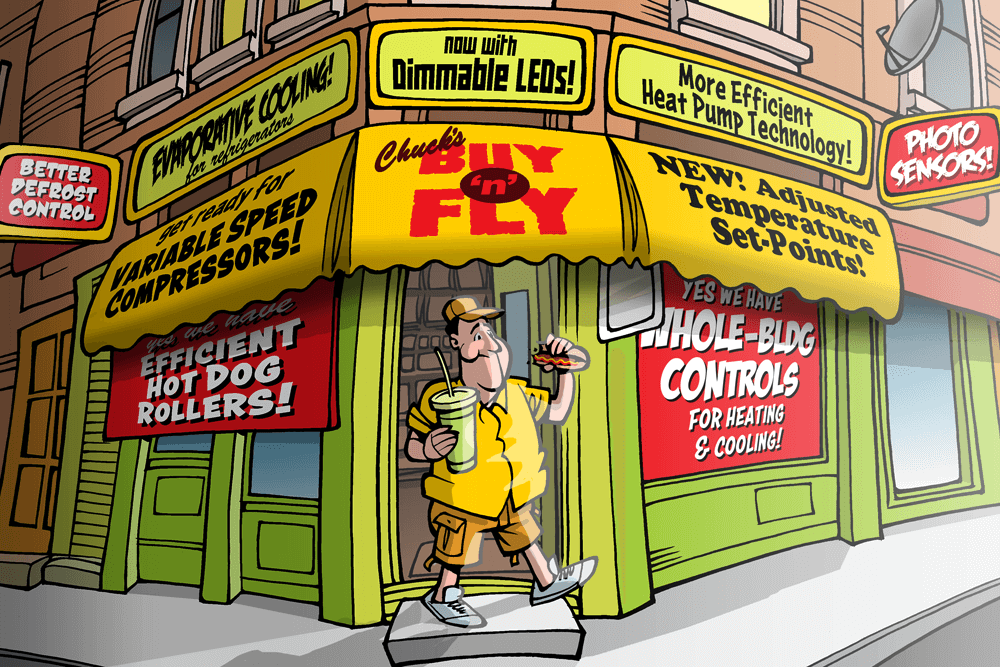From Refrigerators to Hot Dog Rollers: Making Convenience Stores More Efficient

Per square foot, convenience stores are among the biggest energy users in the commercial building sector because of considerable refrigeration, lighting, and space conditioning, coupled with long operating hours. According to the 2012 Commercial Buildings Energy Consumption Survey, the 131,000 convenience stores in the United States consumed 27 billion kilowatt-hours—roughly comparable to annual electricity sales in Connecticut.
While many utility efficiency programs already include offerings for convenience stores, an EPRI assessment of equipment in 24 Tennessee stores revealed further opportunities for energy savings:
- Heating and cooling: For space heating, replace electric resistance heat with more efficient heat pump technology. Improve heating and cooling through better ventilation systems, blowers, and variable-speed compressors. Install whole-building controls to coordinate multiple units.
- Refrigeration: Adjust units’ temperature setpoints, use evaporative cooling, and improve defrost control.
- Lighting: Replace old 24/7 indoor lighting with a configuration that uses daylighting coupled with photosensors and dimmable LEDs. Stores already using LEDs in some applications can make additional gains through a full conversion to LEDs. In some stores, 24/7 outdoor lighting can be optimized.
EPRI’s next step is detailed monitoring of two Texas convenience stores, determining load shapes for all equipment—even the hot dog rollers. From this, researchers can quantify savings achievable through central control systems and estimate loads that can be shifted or shed without disrupting store operation.
Artwork by Kirk Anderson

